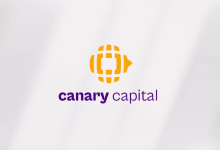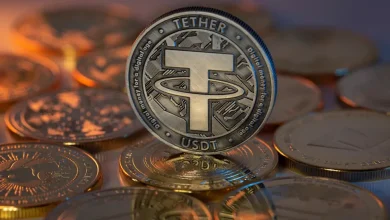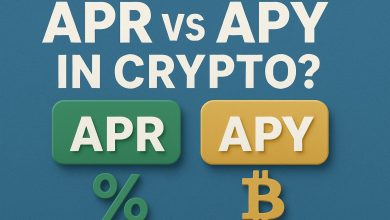From Recreation to Revenue: The Rise of DeFi-Powered Mobile Gaming


KEY TAKEAWAYS
- DeFi integration transforms mobile gaming from entertainment to a revenue-generating ecosystem.
- Play-to-earn (P2E) allows players to earn cryptocurrency or NFTs with real-world value.
- NFTs provide players with true ownership and monetization of in-game assets.
- Developers benefit from new revenue streams like transaction fees and tokenized economies.
- GameFi improves player retention and engagement through financial incentives.
- Popular GameFi titles include Axie Infinity, Illuvium, and The Sandbox.
- Challenges include regulatory uncertainty, economic volatility, and mobile platform scalability.
The industry has journeyed from mere recreation to becoming a formidable economic powerhouse, thanks to the integration of decentralized finance (DeFi) technologies. DeFi-powered mobile gaming, often dubbed as “GameFi,” merges blockchain gaming with decentralized financial mechanisms, transforming player engagement and revenue streams.
This article explores how DeFi is reshaping mobile gaming, enabling players to monetize their gaming skills and time while developers unlock new business models.
The Evolution of Mobile Gaming and Introduction to DeFi
Mobile gaming historically thrived as a leisure activity, with billions of users globally enjoying casual games on the go. Conventional mobile games generate revenue mostly through in-app purchases, ads, and subscription models. However, this traditional paradigm confined value creation predominantly to game developers and publishers.
The rise of blockchain technology and has disrupted this model by embedding real economic value into gaming ecosystems.
DeFi enables financial services such as lending, staking, yield farming, and liquidity provision without intermediaries, all facilitated through smart contracts on decentralized blockchains. Merging these with mobile games, players can now truly own, trade, and earn from digital assets, converting past recreation into real revenue.
The Convergence of Gaming and Finance
The integration of blockchain and DeFi into mobile gaming is driven by smart contracts, tokenized assets, and decentralized marketplaces. Unlike conventional game currencies, blockchain-based tokens hold real-world value, can be traded across platforms, or staked to earn additional rewards.
For example, a player completing quests or defeating bosses can earn cryptocurrency, NFTs representing rare items, or governance tokens for the game’s ecosystem.
This approach shifts the relationship between developers and players. Players gain financial agency, participating actively in the economy rather than simply consuming content. Developers, in turn, create sustainable monetization models that incentivize long-term engagement while distributing value back to the community.
Key Components of DeFi-Powered Mobile Gaming
The following are components of DeFi-powered mobile gaming:
- Blockchain Integration: Decentralized ledgers secure all gaming transactions, verifying asset ownership and enhancing transparency. On mobile platforms, this ensures players control their NFTs and irrespective of game developers’ centralized control.
- NFTs as Unique Gaming Assets: Players use non-fungible tokens () representing characters, weapons, skins, or virtual land. These NFTs can be bought, sold, or rented on secondary markets, empowering players to monetize collectibles and in-game items.
- Play-to-Earn (P2E) Economics: Unlike pay-to-play models, P2E enables players to earn in-game tokens or cryptocurrencies as rewards for achievements, battles, or completing quests. These tokens have real-world value and often integrate with wider DeFi ecosystems.
- DeFi Financial Mechanisms: Staking and yield farming incentivize players to hold tokens by providing passive income, liquidity mining, or dividend-like returns. Lending and borrowing within the gaming economy allow liquidity flows and capital efficiency.
Transforming Player Experience and Revenue Generation
DeFi in mobile gaming fundamentally redefines how value flows between players, developers, and investors:
- Players as Earners: Instead of merely spending money to progress, players gain financial rewards by playing skillfully or investing time. This model has become a viable income source in emerging markets, often supplementing or replacing traditional employment.
- Digital Ownership and Control: True ownership over in-game assets transfers to players, reducing reliance on centralized servers and game publishers. This ownership fosters a sense of permanence and security that traditional games lack.
- New Revenue Streams for Developers: Game developers generate income through initial NFT sales, transaction fees on asset trades, and economic activities like staking pools, all automated via smart contracts, reducing overhead.
- Enhanced Player Retention and Engagement: Financial incentives motivate players to stay longer and invest more time in the game, reversing high churn rates common in mobile gaming.
Play-to-Earn: Redefining Mobile Game Economies
The play-to-earn () model exemplifies this shift. In P2E games, players earn cryptocurrency or NFTs through active engagement. Titles such as Axie Infinity and Splinterlands have demonstrated how robust P2E ecosystems can scale, attracting millions of players worldwide.
The advantages of P2E extend beyond individual earnings:
- For Players: Even casual participants can earn rewards, sometimes comparable to part-time work.
- For Developers: Token economies encourage retention and generate revenue through transaction fees or token sales.
- For Investors: Gaming tokens and NFTs provide opportunities for speculation, staking, and participation in governance decisions.
Leading Examples and Market Trends
Several GameFi mobile titles and platforms exemplify this rising trend:
- Illuvium: An RPG-style mobile game where players catch, battle, and trade creatures (“Illuvials”) as NFTs. DeFi features such as staking and farming expand earning opportunities for players and investors.
- Axie Infinity: One of the earliest and most famous blockchain games offering Smooth Love Potion (SLP) crypto rewards, demonstrating P2E potential, especially in Southeast Asia.
- The Sandbox and Decentraland: Although more metaverse platforms than pure mobile games, these enable users to create, own, and monetize virtual assets, reflecting the growth of cross-platform GameFi economies.
The Broader Economic Impact
GameFi’s economic footprint is rapidly expanding. In 2024, the sector surpassed $2 billion in NFT and token trading volume, driven by mobile and Web3 games. The global is projected to grow from $32.33 billion in 2024 to nahead $40 billion in 2025, with mobile gaming powering much of that surge.
DeFi integration enables:
- Hybrid Play-and-Earn Models: Combining engaging gameplay with financial rewards to appeal to a broader audience, including casual gamers.
- Cross-Chain and Cross-Game Interoperability: Allowing assets to move freely across games and blockchains, increasing liquidity and utility of gaming tokens.
- Metaverse and Social Gaming: Supporting decentralized governance, virtual commerce, and content creation economies where users actively participate in shaping the game world.
Challenges and Future Outlook
Despite its promise, DeFi-powered mobile gaming faces hurdles:
- Regulatory Uncertainty: The complex legal landscape around cryptocurrencies and NFTs affects adoption and investment.
- User Experience Barriers: Blockchain wallets, Transaction fees, and transaction complexity can deter mass-market gamers accustomed to frictionless traditional apps.
- Economic Volatility: Token value fluctuations risk destabilizing in-game economies and player earnings.
- Scalability and Performance: Mobile platforms require efficient blockchain answers to handle thousands of transactions with minimal latency and cost.
The Future of DeFi-Powered Mobile Gaming
DeFi-powered mobile gaming is revolutionizing the industry by transforming passive entertainment into active revenue generation. By combining decentralized finance tools and blockchain technology with popular mobile platforms, GameFi unlocks new economic models that empower players and developers alike.
As technology improves and regulatory clarity emerges, this convergence is poised to reshape how mobile gaming is played, monetized, and experienced worldwide.
FAQ
What is DeFi-powered mobile gaming?
DeFi-powered mobile gaming, or GameFi, integrates blockchain-based financial mechanisms into mobile games, allowing players to earn cryptocurrency or NFTs while playing.
How does play-to-earn (P2E) work?
P2E rewards players with tokens or NFTs for achievements, battles, or completing quests. These rewards can have real-world value or be staked in DeFi ecosystems.
What are NFTs in mobile games?
NFTs (non-fungible tokens) represent unique in-game assets like characters, weapons, or virtual land. Players can purchase, trade, or rent them on decentralized marketplaces.
How do DeFi features benefit players?
Players gain financial agency, earn rewards, stake tokens for passive income, and have true ownership of in-game assets.
How do developers benefit from GameFi?
Developers generate revenue through initial NFT sales, transaction fees, staking pools, and new business models enabled by smart contracts.
What challenges does DeFi gaming face?
Challenges include regulatory uncertainty, token volatility, user experience complexity, and scalability issues on mobile platforms.







